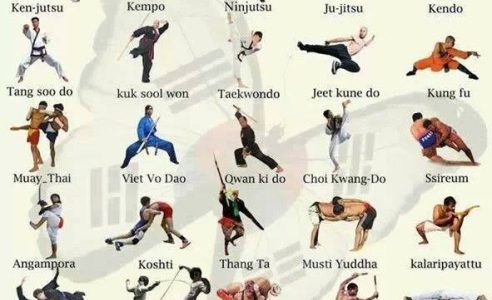Trick Distinctions In Between Standard Martial Arts And Modern Fight Sports: A Comprehensive Analysis
Trick Distinctions In Between Standard Martial Arts And Modern Fight Sports: A Comprehensive Analysis
Blog Article
Web Content Created By-McGinnis Haagensen
When you consider martial arts, do you lean a lot more towards the standard methods or the contemporary fight sporting activities? Each path offers distinct benefits and experiences, formed by their ideologies and training approaches. Traditional martial arts stress personal development and discipline, while modern battle sporting activities concentrate on competition and performance. Comprehending these differences can lead you in choosing the best method for your journey. But just how do these distinctions manifest in training and ideology?
The Philosophy and History Behind Conventional Martial arts
While many individuals connect martial arts with physical fight, the philosophy and history behind traditional martial arts run much deeper. You'll find that these disciplines emphasize personal growth, self-control, and respect.
Stemming from ancient methods, standard martial arts were commonly created for Self-Defense and spiritual growth. They symbolize concepts such as balance, consistency, and self-discipline, guiding professionals past plain battling abilities.
As you educate, you'll not just discover techniques but also get insights into the culture and values that shaped these arts. The routines and practices, often passed down through generations, cultivate a sense of community and belonging.
The Affordable Nature of Modern Battle Sports
Modern fight sporting activities have actually transformed the landscape of martial arts into a very affordable field, where professional athletes take on in an examination of skill, technique, and endurance.
link web page 'll notice that competitions are frequently organized with rigorous guidelines and guidelines, ensuring justice and safety and security. These occasions attract big audiences, fueling the excitement and strength of matchups.
hop over to this site educate rigorously, not just for physical expertise but additionally for psychological durability, understanding that every information counts in the ring. The adrenaline rush during competitors is palpable, as competitors press their restrictions to declare success.
Followers appreciate the athleticism and creativity included, making modern fight sporting activities a thrilling phenomenon that remains to progress and astound fanatics around the globe.
Training Techniques and Techniques: A Comparative Evaluation
The affordable ambience of modern battle sports needs innovative training techniques that differ considerably from traditional martial arts.
In contemporary training, you'll focus on certain methods, competing, and conditioning, usually making use of drills that replicate real battle scenarios. You'll see an emphasis on measurable efficiency and frequent competitors to examine your skills.
In contrast, typical martial arts focus on forms, katas, and thoughtful teachings, commonly highlighting technique and regard over competitors.
Training is normally less intense and might entail repetitive practice rather than real-time sparring.
While both approaches construct skill and fitness, contemporary fight sporting activities offer an extra dynamic and versatile training atmosphere, preparing you for instant obstacles in the ring or cage.
Choose the path that aligns with your goals and interests.
Conclusion
In choosing between traditional martial arts and contemporary combat sporting activities, it really boils down to what you value many. If you're trying to find individual development, technique, and a sense of area, traditional arts could be your ideal fit. But if you thrive on competitors and real-time obstacles, contemporary fight sports could be the means to go. Ultimately, both paths offer special benefits, so it's all about aligning your training with your individual objectives and interests.
